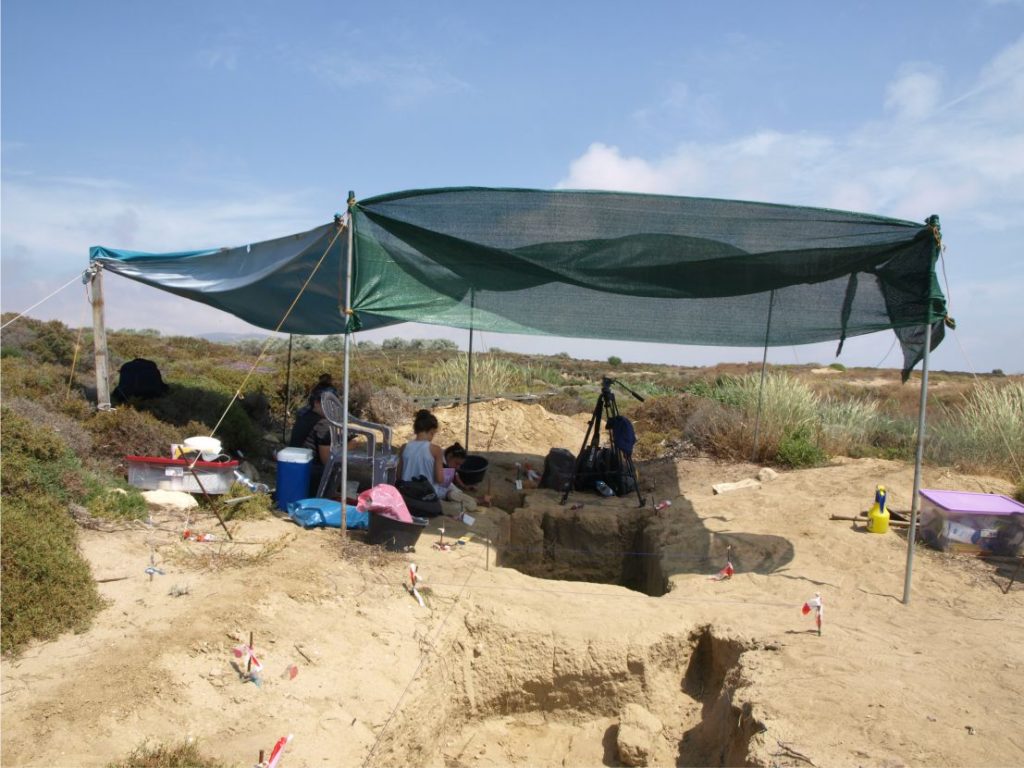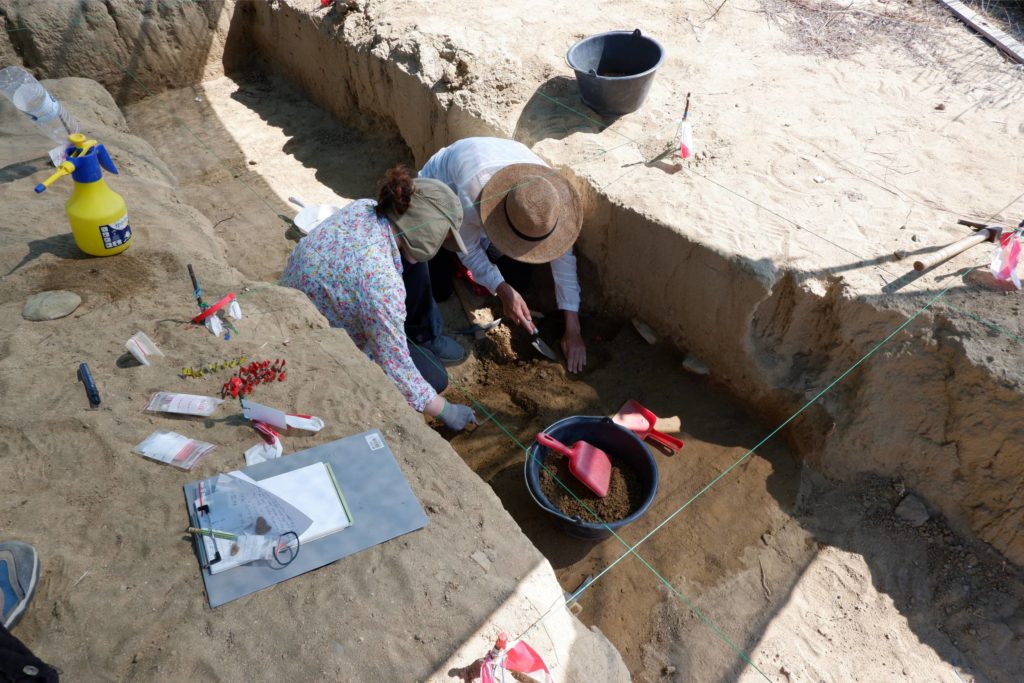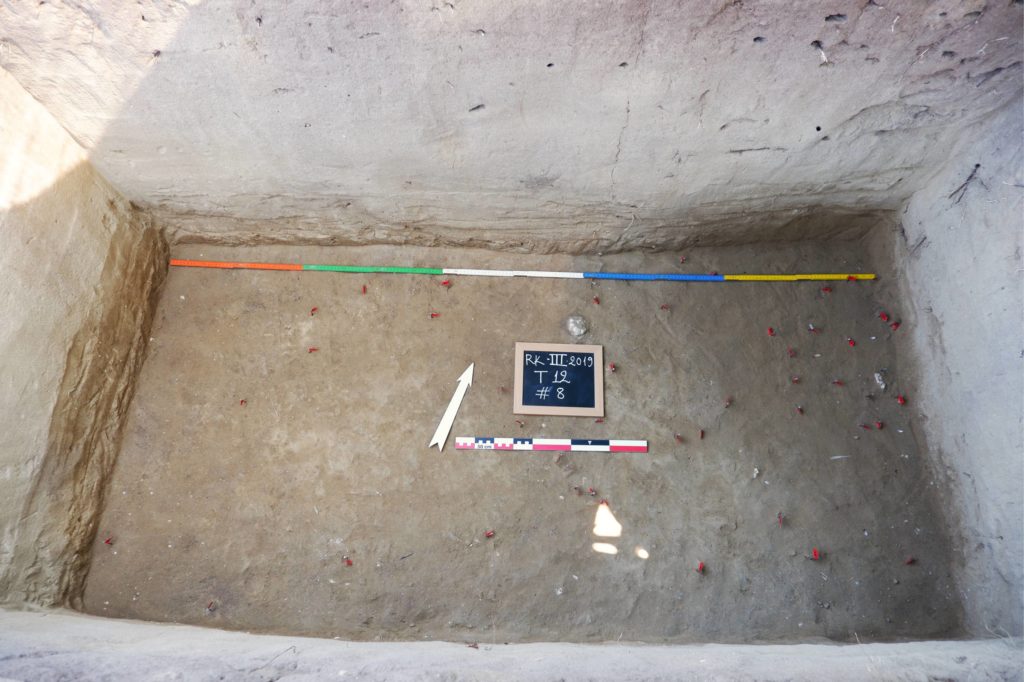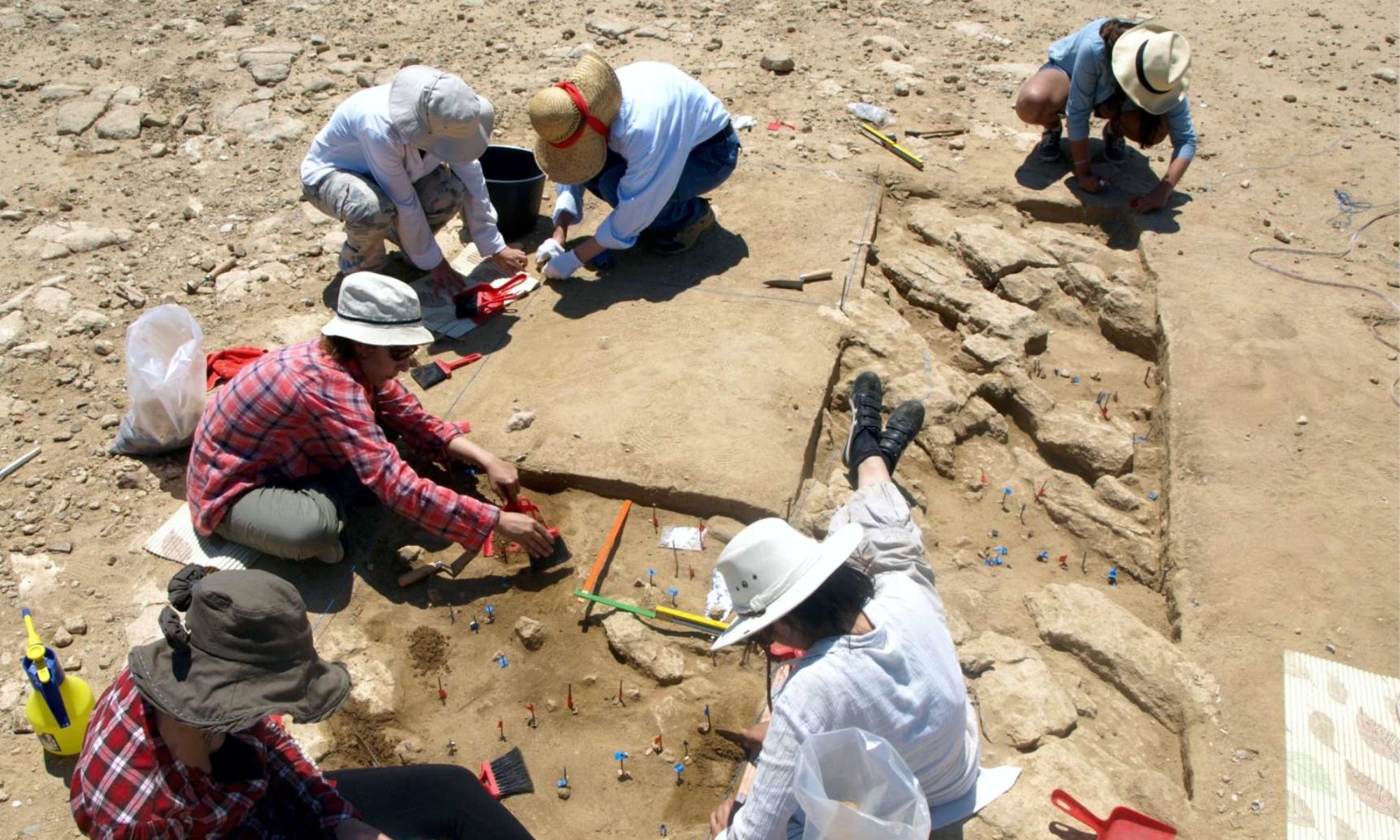Fieldwork at the site of Ouriakos on Lemnos
The site of Ouriakos came to light on the coast of Fysini in the southeastern part of Lemnos where the local municipality had cleared an area covered with low dunes in order to create better access to a parking place. This work had exposed scatters of lithics on a low terrace of calcarenite land surface of Pleistocene age, at a distance of some 20 m from the shoreline today and at an elevation of ca. 8 m above sea level. Tens of thousands of work pieces of chipped stone occur at the site, which covers an area of at least 1,500 square meters, and all of lithics that have been recovered at the site so far appear to belong to the Epipalaeolithic tradition of the Final Palaeolithic in the Aegean.

The fieldwork at the site had two aims: to collect lithics from the surface and to open a number of excavational trenches in order gain an idea of the stratigraphic sequence at Ouriakos. The results of the systematic collection of the surface material led to the recovery a large quantity of chipped stone exposed on the surface of the parking area. Then followed the excavation of a number of the grid squares down to the bedrock following the protocol of Palaeolithic archaeology based the three-dimensional recording of finds.

In the years which followed other parts of the site were excavated in places that offered better conditions of preservation. These were trenches on the opposite side of the stream which produced rewarding results. Under a formation of cover sands 60 to 80 cm thick, the layer of occupation found there was clearly in situ. The same basic lithics (pebble cores and microlithic lunates) were recovered but this time they were coming from a much better stratigraphic context: a sequence of thin anthropic layers (remains of the hunter-gatherers who camped at the site) resting on an older paleosol. The unique open air site of Ouriakos was coming to light.

The study of the lithics carried out by Paolo Biagi and Elisabetta Starnini provides a record of the main technological and typological characteristics of the lithic assemblage of Ouriakos. The industry belongs to the end of the Palaeolithic period and the assemblage includes certain tool types that are either rare or else completely missing in sites in the Aegean and northwest Anatolia. There are two dominant tool types at the site: lunates and end-scrapers. In addition, there are numerous cores used to produce microbladelets. It soon became obvious that: 1. the lithics at Ouriakos are different from what is seen in the assemblages that belong to the Aegean Mesolithic (found on the islands of Yioura, Kythnos, Ikaria etc), 2. that the assemblages of Ouriakos are older and they should date to the end of the Pleistocene and 3. that the closest parallels occur in the Final Palaeolithic of the Antalya region of Anatolia and, in particular, with what is found at the Öküzini Cave (lunate microliths).

Turning to the source of the raw material used for making the tools at Ouriakos, a number of good flint sources were identified at a distance of 7 km to northwest of the site while there are other sources of raw materials in the island that could have been exploited by the local hunter and gatherers. Absolute dating of Ouriakos was obtained from a fragment of charred animal bone [GrN-53229: 10390 ± 45 BP / 10437-10198 BC (1σ) 10563-10121 BC (2σ)] which fits in well with what is known about the chipped stone at the site.

After ten years of fieldwork at the site and the studies of the lithic assemblages, the picture that is coming to light at Ouriakos is that of an important Epipalaeolithic site – both for the Aegean and for the Eastern Mediterranean. Ouriakos – even to the limited extent that the site is known today – represents a campsite that is unique in the Aegean region. Whether the specific location of Ouriakos was used for short and repeated visits or where it was frequented for longer periods of time, it is difficult to say at this time. The rather specialized character of the lithic assemblage was oriented toward the on-site production of microlithic lunates and small end-scapers, which were probably used as inserts in hunting weapons. The discovery of the site of Ouriakos on Lemnos and the fieldwork that is still conducted at the site have established beyond a doubt its significance in the Aegean world. Remarkably, very few sites dating to this time are in northwest Anatolia, the Black Sea, the southern Balkans and the Aegean islands. In fact, prior to the work at Ouriakos, no site of this age had been excavated on an island in the Aegean Sea. The potential significance of the site is even greater if consider first, the climate changes associated with the Younger Dryas and the onset of warmer and wetter conditions at the start of the Holocene and second, the advent of early voyaging on the part of hunter-gatherers and coastal foragers in the Aegean.



